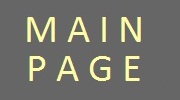
The Franciscan Church and Monastery originally was erected with a ground plan of the Greek cross by the duke Bolesław the Shy as the mausoleum for him and his successors. Indeed, the founder is buried here, as well as his sister blessed princess Salomea, duke Leszek the Black and Stefan – first son of future king Władysław the Elbow. But later Władysław the Elbow and all his successors choose the Wawel Cathedral as the place of their eternal dream.
In 1850 so called Great Fire (the biggest fire ever in Krakow) burned the church. All altars, benches and furniture was destroyed. After restoration in the end of the 19th century Stanislaw Wyspianski was commissioned to paint polychromies and stained glass windows. Wyspianski painted the church in Art Nouveau style in relation with Polish folk culture. He painted various flowers like wheat, clovers, corn flowers, mulleins, poppies, lilies, sunflowers, dandelions, roses, briars, daisies, pansies, irises, etc. That had to remain traditional culture of Poland and "The Flowers of Saint Francis", series of novels about miracles of saint Francis. In the chancel Wyspiański painted Caritas, and Virgin Mary dressed with local, rural skirt.
Together with the polychromies, Stanisław Wyspianski created stained glass windows. In the chancel they present St. Francis – patron-saint of the church, blessed Salomea whose relics stay in here and four elements (fire, air, earth and water). Above the choir there is God the Creator.
Wyspiański did not paint the whole temple. Commision that valued the paintings disemployed the artist. Some parts of the church are painted by Tadeusz Popiel. Paintings by Tadeusz Popiel are also interesting. He presented four pictures of saint Francis: Speaking with Jesus Christ, Temptation, Stigmatisation, Praying sain Francis.
Next to the polychromies the paintings by Wojciech Rossowski are worth mentioning. They present ‘Giving the rule by Innocent III to Saint Francis’, ‘Inviting Franciscans to Krakow by Bolesław the Shy’ and ‘Saints Kunegunda and Jolanta converting pagans’. Worth mentioning are six altars in the nave. The altars come from not existing All Saints church.
Internal part of the church create three chapels:
• St. Mary called Sad Virgin Mary - the painting was crowned by the cardinal Albin Dunajewski. The polychromies are made by Piotr Niziński and Stefan Matejko.
• Holy Cross – the chapel was build in 1595 to memorize nativity of the prince Władysław (later the king Władysław IV Vasa). Together with erection of the chapel Brotherhood of Good Death was established. The brotherhood once a year, in Easter could save one prizoner saving his life. In the chapel one can admire Crucificattion – fourteen paintings by Józef Mehoffer. Here blessed Aniela Salawa from Siepraw is buried.
• Blessed Salome – here blessed Salome and her brother Bolesław the Shy are buried. The chapel is second burial of Blessed Salome. In 1630 her remnans were transfered from the chancel. Walls of the chapel are decorated by polychromies painted by Józef Mikulski.
Next to the church, the cloister is also worth visiting. Walls of the cloister are decorated with paintings of Krakow's bishops. The idea of painting bishops comes from Middle Ages. In 1253 bishop Stanisław was canonised in Asisi, Italy. Especially for the ceremony a picture of bishop Stanisław was painted. Those, who touched the painting got cured. One believed that if bishop St. Stanisław's painting made miracles, other bishop of Krakow should paint themselves too. Because the canonisation took place in Franciscan's Monastery in Asisi, those paintings should be hanged in Franciscans Monastery in Krakow. Indeed, this is the only such galery in Poland.
The church and the cloister are the closest objects to the Bishops’ Palace – traditional place where the cardinals of Krakow live. Here also Karol Wojtyła, future pope John Paul II used to pray. To commemorate the pope the Franciscans fixed a commemorative plaque informing about Karol Wojtyła’s customary place of praying.
At the western portal of the church there is monument of Adam Stefan Sapieha, the cardinal who performed his function during World War II and who gave priesthood to Karol Wojtyła in 1946.
Next to the beautiful church also the monastery is worth mentioning. Walls of the monastery are decorated with dozens paintings presenting bishops of Krakow. It's presentation is related with canonisation of krakow bishop, Stanislaw in 1253. According to hagiographic legends, to canonise Stanislaw one painted his picture and sent it to Asisi, Italy. All who touched the painting got cured. Succesors of the bishop Stanislaw, it means the then bishops intended to paint themselves too. Because the mirracle took place in Assisi, place related with saint Francis, the bishop paintings hang in the franciscans monastery.
Pay attention to :
• Polychromies and stained glasses by Stanisław Wyspiański
• Crucification by Józef Mehoffer
• Miracle painting of Virgin Mary
• John Paul II bench
• Copy of Tourin Shroud
• Krakow Bishops Gallery
• Confession of blessed Salomea
People related with Franciscans' Church:
• Bolesław the Shy (duke)
• blessed Salomea (princes)
• Leszek the Black (duke)
• Władysław the Elbow (king)
• Stanisław Wyspiański (paintor)
• Józef Mehoffer (paintor)
• blessed Aniela Salawa
• saint Maksymilian Maria Kolbe (priest)
• blessed John Paul II (pope)













